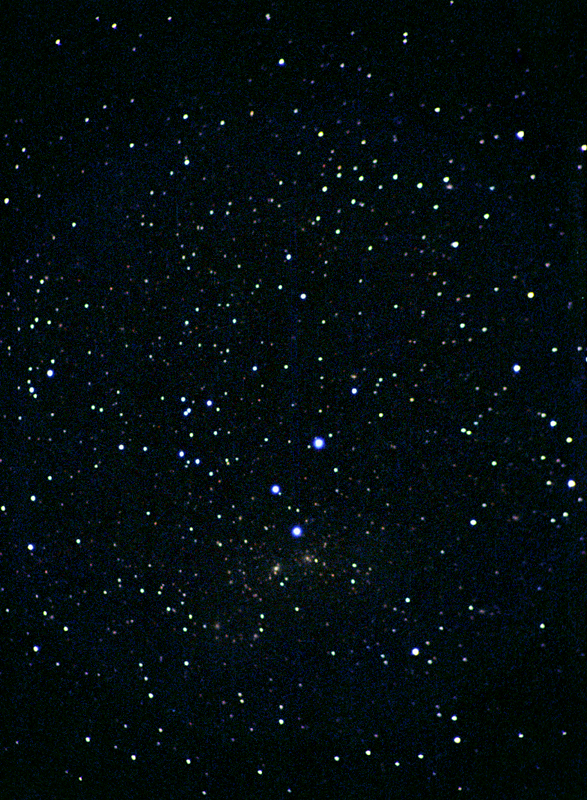
60 minutes exposure, Fuji Super HG II 400 film.
5" f/5 refractor, prime focus.

Almost all observers are well aware of then Virgo cluster of galaxies. That huge swarm of over 1000 galaxies that straddles the Coma Berenices-Virgo region. However not so well known is that there is another equally large cluster in Coma Berenices known as The Coma Cluster or Abell Galaxy Cluster 1556. The main reason that this galaxy cluster is not so well known is that the cluster is nearly 10 times further away than the Virgo cluster, at a distance of over 400 million light years. This means that most of the members of the cluster are small and faint.
The brightest member is the giant eliptical galaxy NGC 4889. At magnitude 13, it is about the most distant galaxy visible in a small telescope, having been observed in telescopes as small a 5". Within 1.5 degrees of the centre of the cluster there are over 800 galaxies brighter than magnitude 16.5. While undoubtably many of these are background galaxies, the cluster is nontheless very rich.
In the photograph above, there are over 30 galaxies visible, although almost all of them appear as faint stars at this resolution. The bright galaxy just below the bottom of the 3 bright stars in the centre is the 12th magnitude NGC 4874. Brighter and to the left is NGC 4889. A CCD image of NGC 4889 can be found here.
The cluster is not difficult to locate, being situated about 10 degrees south of Cor Caroli (alpha canum venaticium) and about 6 degrees east and 2 degrees north of NGC 4565. Below are several maps to assist observers in locating this very distant cluster. The first map is a large scale map showing the general area around the cluster. The second chart shows an area of about 4 degrees and includes the cluster and the nearest bright star, beta comae. This is for use at the finder. The final charts are small-scale maps of the cluster showing ever fainter stars and is for use with the main telescope. The numbers alongside some of the stars are the magnitudes of those stars.
 Wide field chart |
 Medium field chart |
 Narrow field chart |
 Narrow field chart |